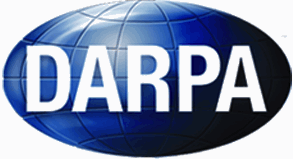 DARPA’s Information Innovation Office (I2O) has issued a new solicitation for “innovative research proposals in the area of social media in strategic communication” that will give rise to “a new science of social networks built on an emerging technology base.”
DARPA’s Information Innovation Office (I2O) has issued a new solicitation for “innovative research proposals in the area of social media in strategic communication” that will give rise to “a new science of social networks built on an emerging technology base.”
Here’s the overview from the official broad agency announcement:
The conditions under which our Armed Forces conduct operations are rapidly changing with the spread of blogs, social networking sites, and media-sharing technology (such as YouTube), and further accelerated by the proliferation of mobile technology. Changes to the nature of conflict resulting from the use of social media are likely to be as profound as those resulting from previous communications revolutions. The effective use of social media has the potential to help the Armed Forces better understand the environment in which it operates and to allow more agile use of information in support of operations.
The general goal of the Social Media in Strategic Communication (SMISC) program is to develop a new science of social networks built on an emerging technology base. In particular, SMISC will develop automated and semi-automated operator support tools and techniques for the systematic and methodical use of social media at data scale and in a timely fashion to accomplish four specific program goals:
1. Detect, classify, measure and track the (a) formation, development and spread of ideas and concepts (memes), and (b) purposeful or deceptive messaging and misinformation.
2. Recognize persuasion campaign structures and influence operations across social media sites and communities.
3. Identify participants and intent, and measure effects of persuasion campaigns.
4. Counter messaging of detected adversary influence operations.
And the relevant technical areas for the funding opportunity:
The development of a new science of social networks and the solutions to the problems posed by SMISC will require the confluence of several technologies including, but not limited to, information theory, massive-scale graph analytics and natural language processing. While SMISC will not directly support natural language processing development efforts, it will certainly use the results of previous programs as well as contribute new challenges to further stimulate ongoing efforts.
Technology areas particularly relevant to SMISC are shown here grouped to correspond to the four basic goals of the program as described above:
1. Linguistic cues, patterns of information flow, topic trend analysis, narrative structure analysis, sentiment detection and opinion mining;
2. Meme tracking across communities, graph analytics/probabilistic reasoning, pattern detection, cultural narratives;
3. Inducing identities, modeling emergent communities, trust analytics, network dynamics modeling;
4. Automated content generation, bots in social media, crowd sourcing.
Recent research has shown that traditional approaches to understanding social media through static network connectivity models often produce misleading results. It is, therefore, necessary to take into account the dynamics of behavior and SMISC is interested in a wide variety of techniques for doing so.
DARPA anticipates $42 million in support of fundamental research advancing these areas over a period of three years. Proposals are due between Sept. 13 and Oct. 11, 2011.
For more details, check out the full program announcement, available for download here.
(Contributed by Erwin Gianchandani, CCC Director)









